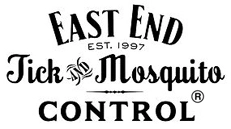When it comes to tick-borne illnesses, Lyme disease tends to garner the headlines with its long-term health consequences and high-profile sufferers. It’s easy to forget that there are other potentially debilitating infections transmitted by ticks.
One of those diseases is Ehrlichiosis, a tick-borne bacterial illness that can be transmitted to humans – as well as to domestic and wild animals. In recent years, it has become particularly problematic in dogs.
How Do Humans Get Ehrlichiosis?
Ehrlichiosis in humans is spread primarily by the lone star tick, which is prevalent on Long Island. Like other tick-borne pathogens, Ehrlichiosis transmission occurs when a tick bites its host, and its saliva enters the host’s bloodstream through the skin. The same is true for tick-to-animal transmission.
What Are the Symptoms of Ehrlichiosis?
Initial Ehrlichiosis symptoms resemble those of the flu:
- Fever
- Chills
- Nausea
- Vomiting
- Diarrhea
- Muscle aches
- And joint pain.
These may be accompanied by a rash and feelings of confusion or disorientation. If the disease remains untreated then it can lead to heart, respiratory, or kidney failure; neurological damage; seizures; coma, or severe secondary infections.
Ehrlichiosis in dogs often goes undetected – developing in three stages. In the early acute phase, dogs may exhibit a fever, swollen lymph nodes, respiratory distress, unsteady gait, and spontaneous bleeding. The disease may proceed to a subclinical phase with mild or no symptoms. If the dog doesn’t clear the infection during this period, the disease can progress and cause anemia, blindness, nerve damage, lameness, and even death.
Is Ehrlichiosis the Same as Lyme Disease?
While there is overlap in the symptoms of Ehrlichiosis and Lyme disease, the diseases are caused by different ticks carrying different bacteria. Additionally, Ehrlichiosis (unlike Lyme disease) is more of an acute infection, as opposed to a long-term one. Although it may have lasting consequences for those who leave it untreated.
Does Ehrlichiosis Ever Go Away?
With proper treatment, Ehrlichiosis typically improves within 48 hours and resolves completely within several weeks. If left untreated for too long, it can become chronic, debilitating and even deadly, especially for the very young, the elderly, or those with weakened immune systems.
Early treatment consists of doxycycline or other tetracycline antibiotics. Because time is of the essence, if you have been bitten by a tick and are experiencing symptoms, your physician may order a preemptive course of this medication… even before test results are received.
The same holds true for Ehrlichiosis in pets. Early treatment is crucial and serious complications may occur if the disease is not addressed.
East End Tick & Mosquito Control® Protects Your Property from Tick Threats
Protect yourself and your family by using tick repellent and wearing clothing that protects your skin. Always perform a tick check when you come indoors, and promptly remove any ticks you find. At home, keep your property tick-free by creating a perimeter with year-round tick treatments.
East End Tick & Mosquito Control® has protected Long Island homes and businesses from tick threats for more than 20 years, and we look forward to serving your family. Contact us online for a free quote or call us at (631) 324-9700 in East Hampton; (631) 287-9700 in Southampton, or (631) 765-9700 in Southold.


